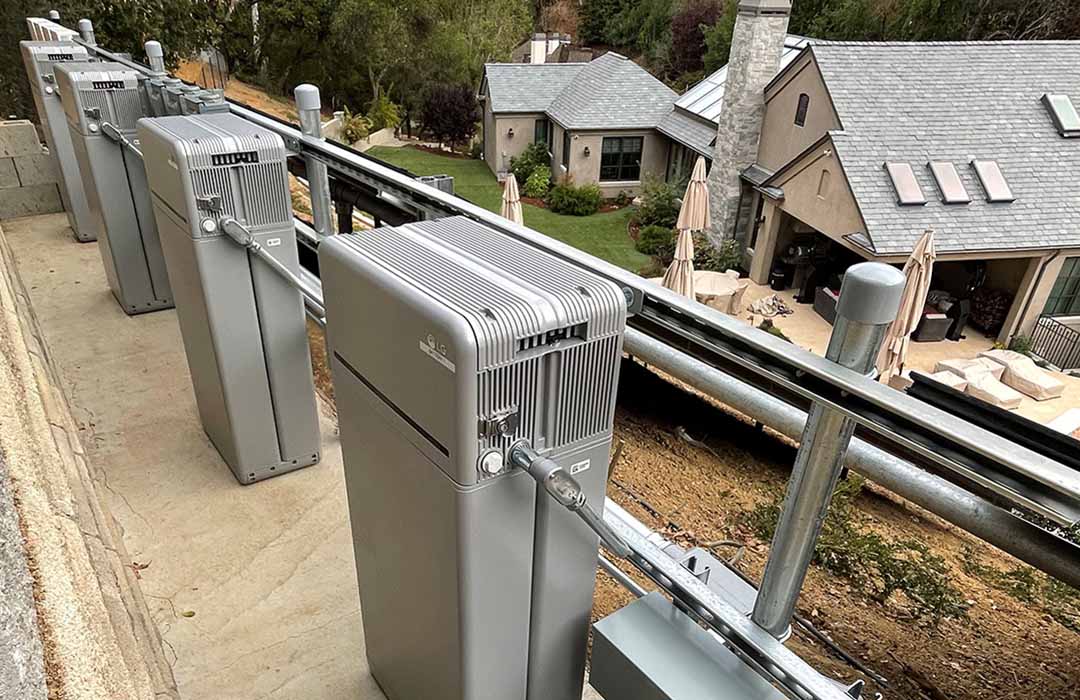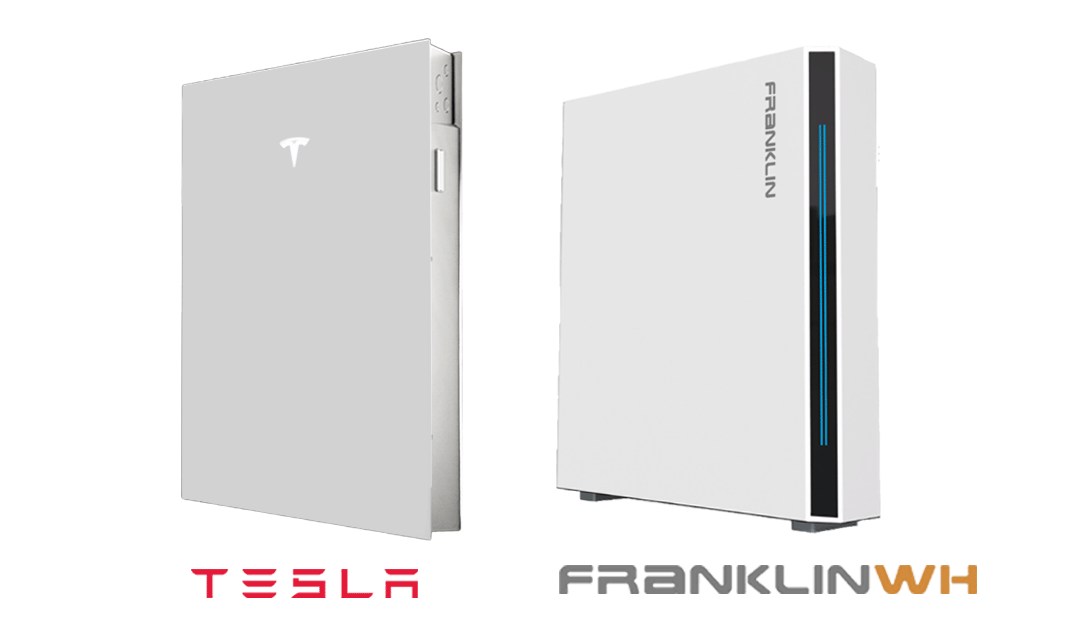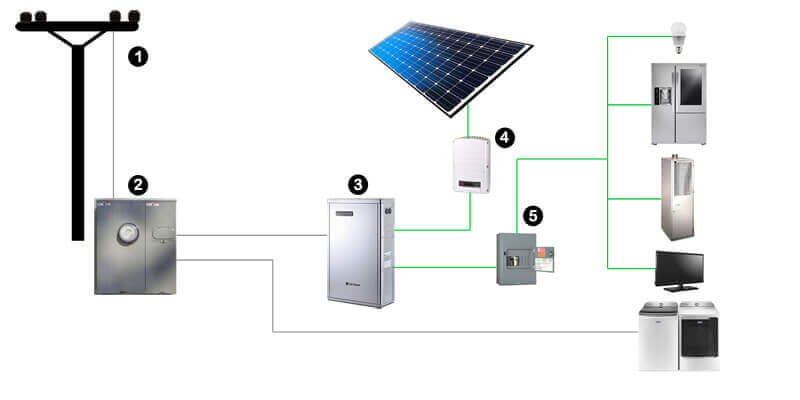Home Battery Backup System
Look around your home. Your land line phone, fireplace and pilot lights (on stoves and hot water heaters) are likely gone. Our reliance on electrical power has increased significantly over the past 20 years. So when there is a power failure, we have no communications, no heat and no hot water.Our electricity-intensive society needs backup power more than ever.
Over the past few years, many of our SF Bay Area customers have experienced multiple blackouts, ranging from a few hours to a few days (or more). And these outages are happening in populated suburban areas – not just up in the remote hills. PG&E’s wild fire safety plan (called “Public Safety Power Shutoff”) will dramatically expand the scope of planned grid outages, which are intended to preempt the risk of its grid sparking more deadly wildfires. And living in California it is only a matter of time until the next earthquake hits.

Fortunately, battery and inverter technology has improved significantly over the past few years. New home battery backup system are more reliable and less expensive than conventional natural gas backup power systems – and they provide the additional benefits of reduced electricity costs, especially for customers on time-of-use rates. These combined systems also qualify for federal tax credits and significant rebates – which can cover up to 50% of system costs.
In a nutshell, with these new solar battery backup and storage solutions you can reduce your electric bills – and have a reliable source of backup power regardless of the condition of local gas pipelines and the electric grid.
Technology of Home Battery Backup Systems
How Battery Backup Systems Work
A home battery backup system consists of a battery and controller run by intelligent software to optimize charge and distribution of stored power.
The system connects directly to your home’s electrical system to optimize daily energy use and to provide backup power during a grid failure. It does this by taking in power from your solar panels and then strategically deploying it to essential electrical circuits within your house. Essential circuits typically include lights, appliances and outlets so you have peace of mind in the event of a power outage.
Batteries for home backup systems use the same advanced lithium ion battery cells that power electric cars. The battery charge controller manages peak efficiency of the charge within the battery to provide you with backup power.
- Utility Service: Your utility provider connects to your home or business to the electrical grid.
- Main Breaker Panel: Power from the grid enters your home through a set of wires connected to your main breaker panel where it divides electricity into subsidiary circuits that feed the electrical outlets within your home or business.
- Battery and Control System: Lithium Batteries store solar energy generated during the day, and then consumed in the evening when rates are higher. Many systems also provide backup power from the battery (at night) and sun (during the day) when there is a power failure. Control system software determines the optimal times to charge or discharge the battery, and self-consume or sell back energy that is stored or generated in the home. This software must interface with the inverter and battery, as well as understand your home’s energy consumption schedules and local utility rates.
- Solar Power System: Solar Panels generate energy during the day. This energy can be stored in the battery (if the battery’s charge level is low), used directly in your home, or sold back to your utility under a net metering rate plan. An Inverter changes the DC power from batteries or solar panels into the AC power that you used in your home.
- Essential Loads Sub-Panel: An essential loads sub-panel is installed, which connects power from the Battery System to the important rooms and appliances in your home so you have power when a blackout happens.
Protect Against Blackouts – Solar panels are required by law to shut off during a power outage to prevent electrocution hazard to utility workers trying to fix the problem. But with a battery backup solution your solar panels continue running in an outage, providing continuous power to critical loads in your home.
Protect Yourself From Rate Changes and Save Thousands in Electricity Costs – Electrical rates from utility companies are constantly increasing and their time-of-use rates always seem to be lowest when your solar panels are working, and highest when they are not. A solar powered battery backup system from Cinnamon Energy Systems allows you to store the excess energy you produce, and use it when you need it most –keeping your utility bills as low as possible.
Powerful Incentives – These systems qualify for federal tax credits and significant rebates – which can cover up to 50% of the system cost.
Battery Solutions
The team at Cinnamon Energy Systems regularly performs hands-on technical evaluations of residential battery storage systems to ensure we are offering the leading solutions for your home. These evaluations are based on installation and performance results, using commercially available products and software to provide real-world insight on solutions that will deliver exceptional results for our customers.
Based on our technical evaluations, Cinnamon Energy Systems is proud to offer solutions from Tesla and Franklin.

Tesla Powerwall 3
Powerwall is an AC coupled Lithium-ion chemistry battery system with 13.5 kWh capacity and a 10 year warranty. Powerwall is a scalable battery storage solution. Powerwall is a great solution for both new installations and for adding storage to existsing solar power systems. Powerwall monitoring integrates with the Tesla EV app for ease of reference where you can monitor your car, solar and battery from the app on your mobile phone.
FranklinWH Battery
FranklinWH, is a powerful AC coupled battery backup solution for your home. Featuring a Lithium Iron Phosphate (LFP) chemistry that offers greater cycling properties compared to ordinary lithium ion batteries. The FranklinWH battery can be integrated with a generator, has built in load shedding capabilities, and it can be installed without a solar power system. With a 13.6 kWh capacity per battery the solution is scalable up to 15 batteries and carries a 12 year warranty
Your Silicon Valley Solar and Battery Backup Expert
If you’d like to eliminate black-outs and are ready to save thousands of dollars over the next 20 years or more, request a free quote from Cinnamon Energy Systems –Silicon Valley’s premier solar and battery backup company.
Request a Quote
Let us Design a Battery Backup Solution for You
* These fields are required.

